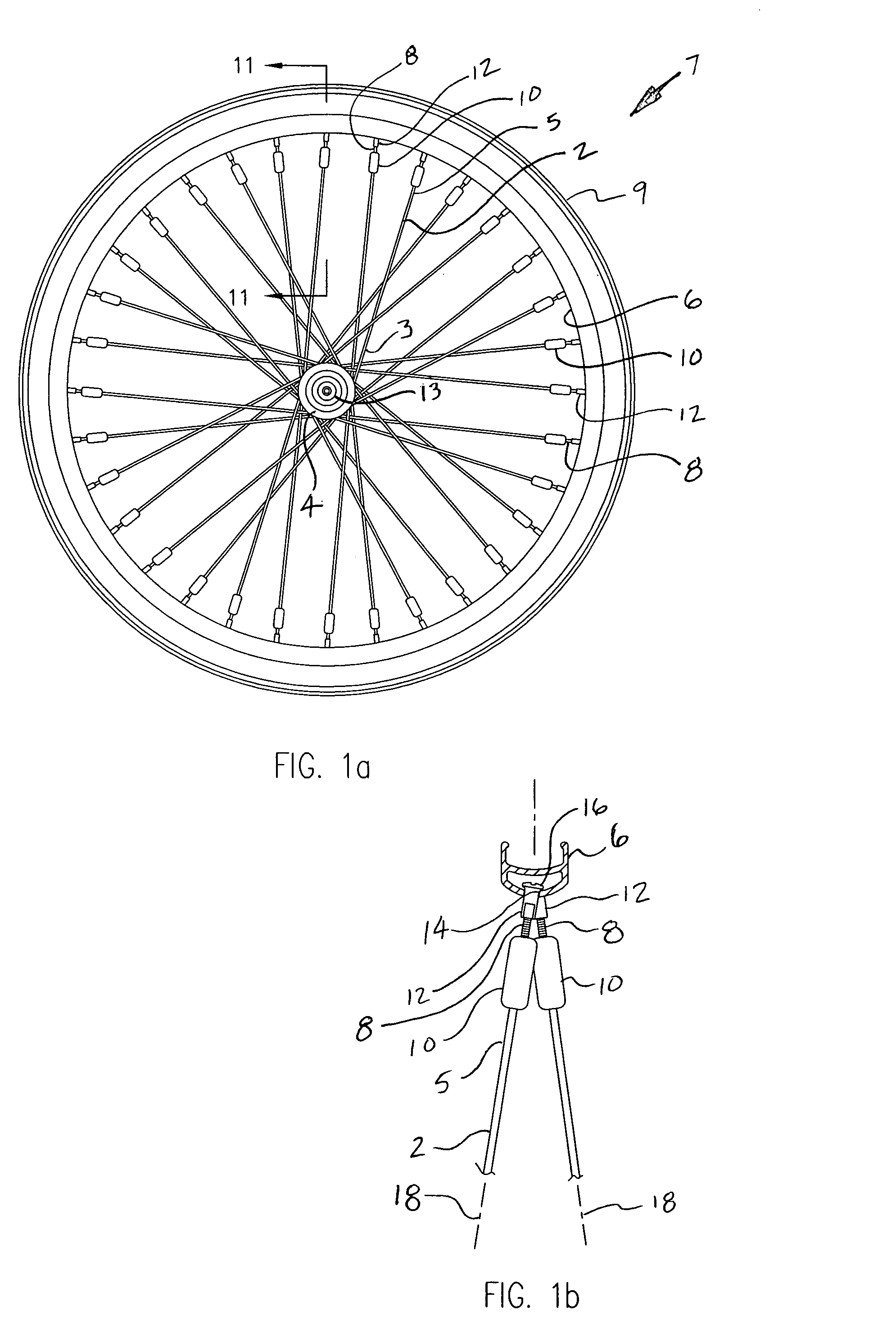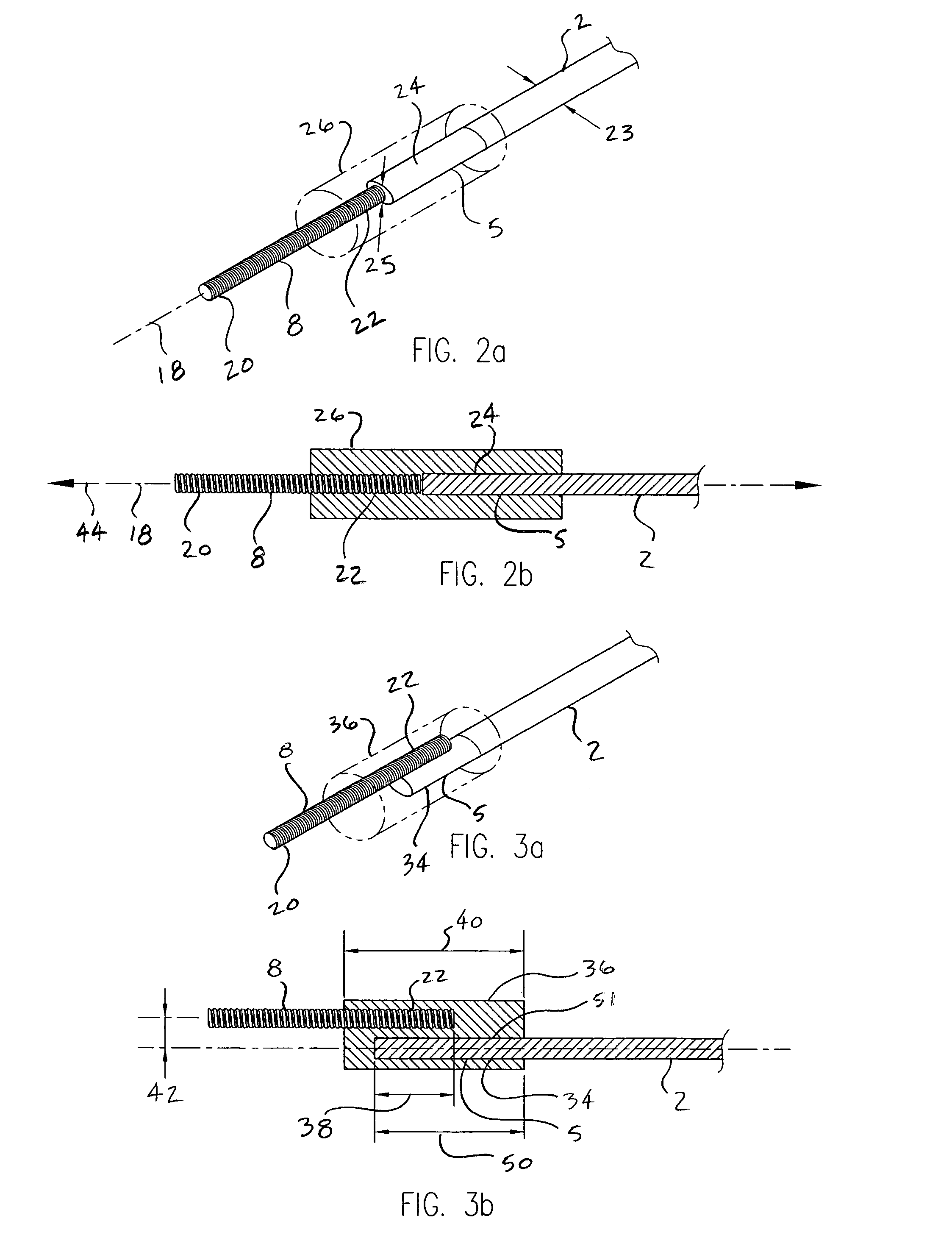Connecting system for tensile elements
a technology of tensile elements and connecting systems, which is applied in the direction of mechanical equipment, manufacturing tools, transportation and packaging, etc., can solve the problems of increasing the weight of the wheel assembly, poor vibration-damping characteristics, and the steel spokes of the conventional bicycle wheel are quite heavy, so as to achieve the effect of equal or greater tensile strength, easy adaptation, and exceptional durability
- Summary
- Abstract
- Description
- Claims
- Application Information
AI Technical Summary
Benefits of technology
Problems solved by technology
Method used
Image
Examples
Embodiment Construction
[0071]FIG. 1a shows a bicycle wheel 7 constructed with fiber reinforced spokes. The fiber reinforced spokes 2 are connected at their first end 3 to the hub 4. Hub 4 includes a central axle 13. To create a solid connection between the spoke 2 and the rim 6, the second end 5 of the fiber reinforced spoke 2 is first connected to a threaded fastener 8 by means of a coupling collar 10. The threaded fastener 8 is threadably mated to a spoke nipple 12 to connect with the rim 6 in the conventional manner. The tire 9 is mounted to the rim 6 in the conventional manner. It may be seen here that coupling collar 10 and fastener 8 are additional elements that serve to provide an effective connection for the second end 5 of the fiber reinforced spoke. FIG. 1a shows that all of the spokes of the wheel 7 may be terminated at the rim 6 in this manner. The coupling collar 10 and the fastener 8 may alternatively be connected to the first end 3 of the spoke 2 for connection to the hub 4. In such a case,...
PUM
 Login to View More
Login to View More Abstract
Description
Claims
Application Information
 Login to View More
Login to View More - R&D
- Intellectual Property
- Life Sciences
- Materials
- Tech Scout
- Unparalleled Data Quality
- Higher Quality Content
- 60% Fewer Hallucinations
Browse by: Latest US Patents, China's latest patents, Technical Efficacy Thesaurus, Application Domain, Technology Topic, Popular Technical Reports.
© 2025 PatSnap. All rights reserved.Legal|Privacy policy|Modern Slavery Act Transparency Statement|Sitemap|About US| Contact US: help@patsnap.com



